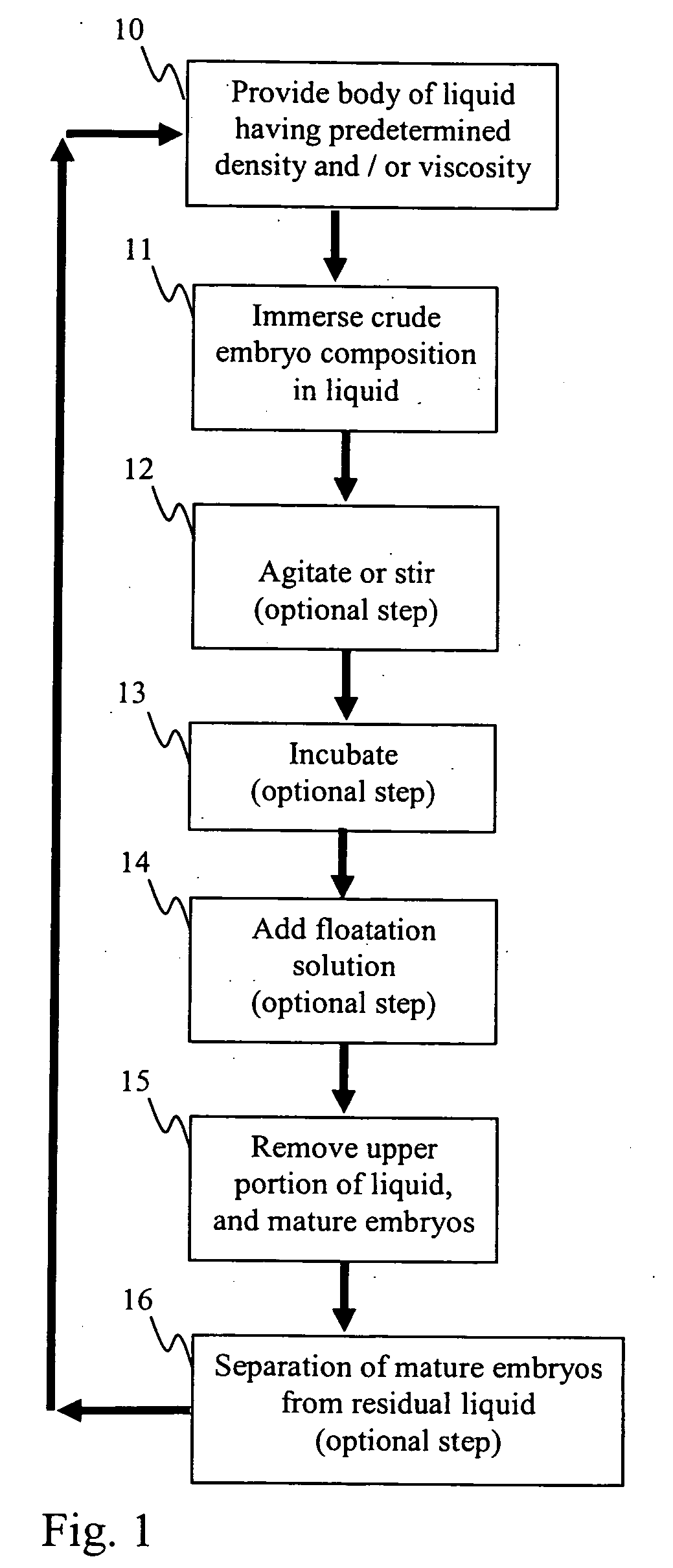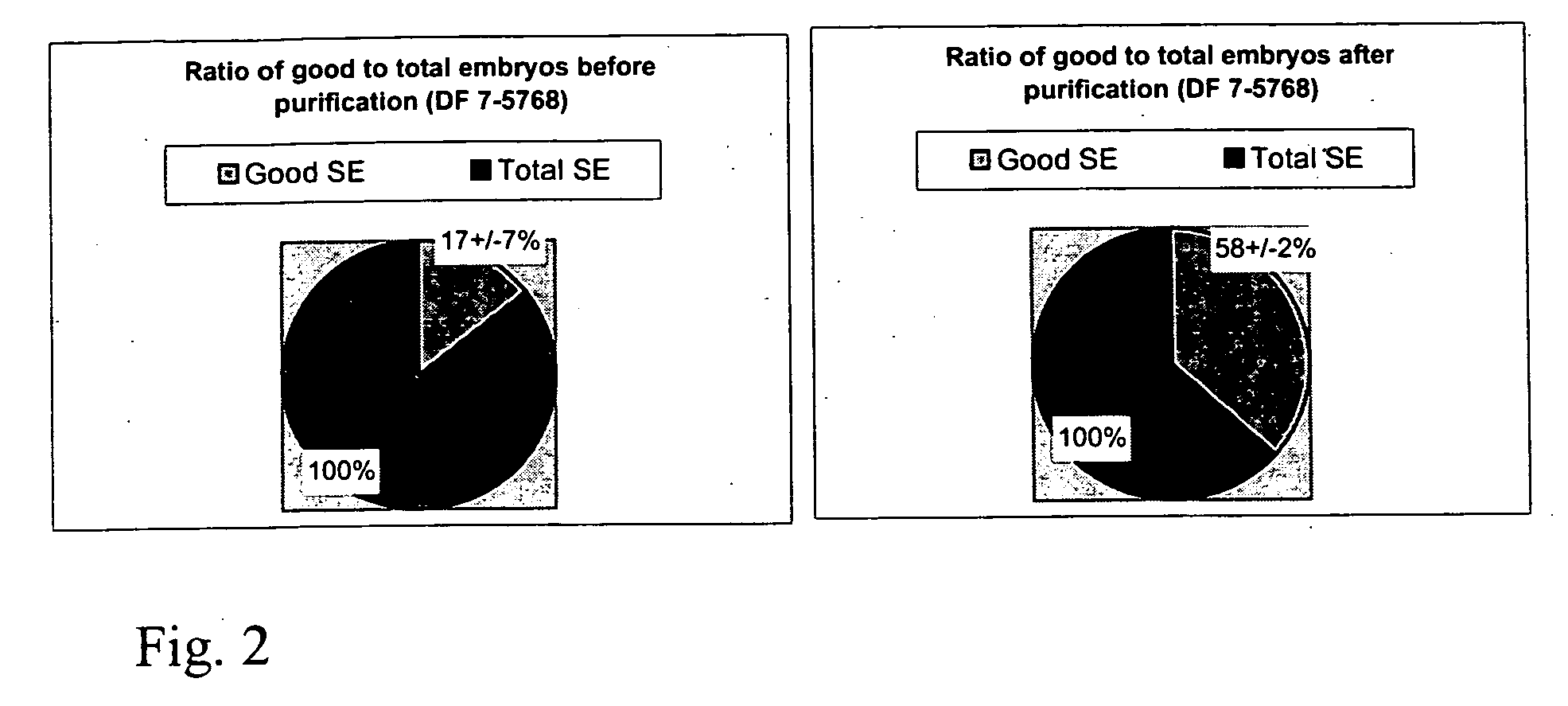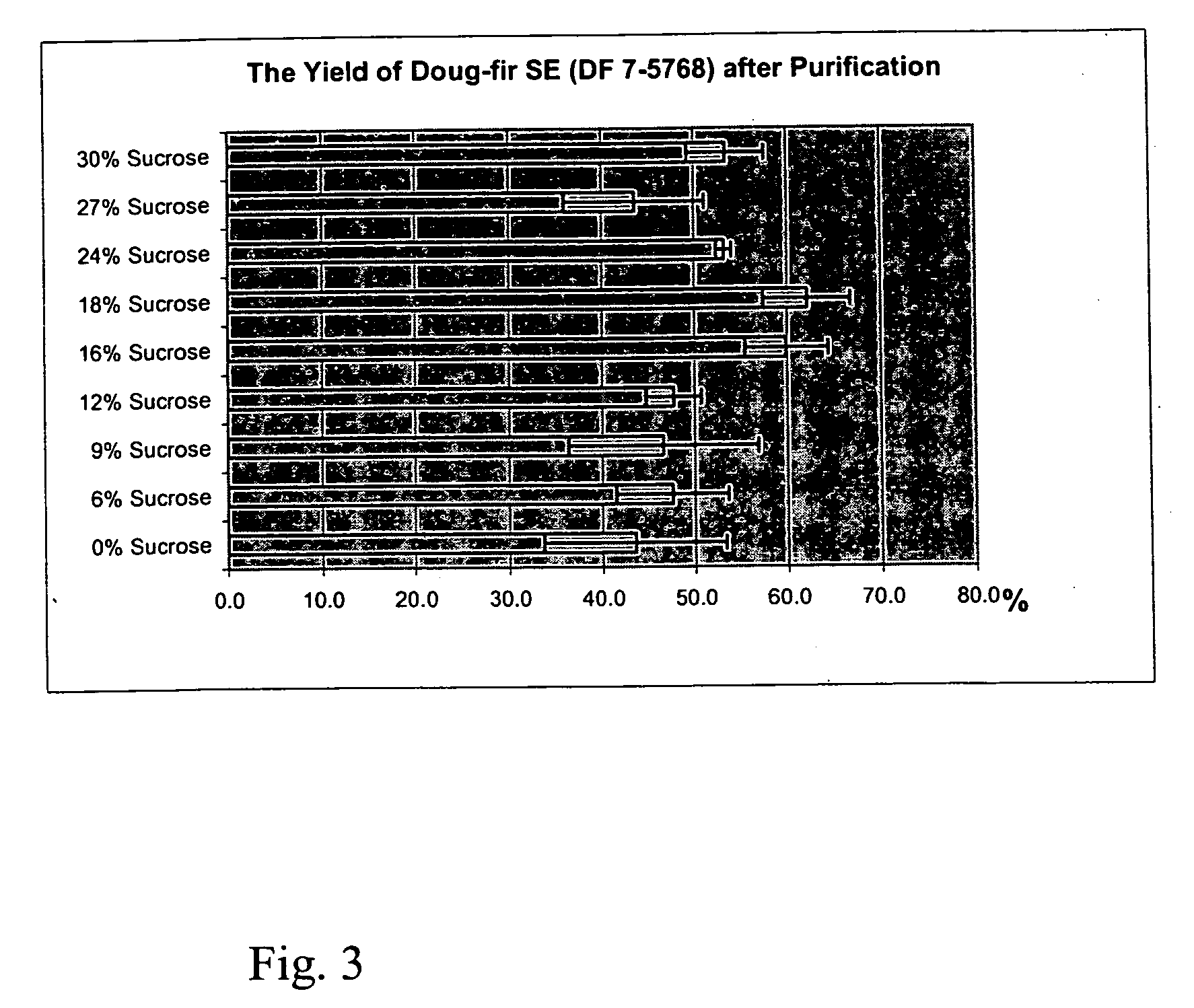Bulk sorting of conifer somatic embryos
- Summary
- Abstract
- Description
- Claims
- Application Information
AI Technical Summary
Benefits of technology
Problems solved by technology
Method used
Image
Examples
example 1
Douglas-Fir Somatic Embryo Density is Correlated with TAG Content
[0108] Douglas-fir somatic embryos derived from four different cell lines were separated using a sucrose density gradient, in accordance with the methods of the present invention.
[0109] The results of these experiments are summarized in Table 1. For each of the cell lines tested, the top fraction of mature embryos consistently comprised higher levels of TAG when compared to the bottom fraction of immature embryos. On average, the top fraction of embryos comprised more than 30% higher levels of TAG compared to the bottom fraction of embryos in selected samples.
TABLE 1Concentration of TAG in purified Douglas-fir somatic embryos(total TAGs per mg fresh weight, ukg / mg).TAG concentration in purified DF SE(tiotal TAGs per mg of FW, ukg / mg)SolubleInsolubleCellSE mor-protein,protein,lineFractionphologyTAGsukg / mgukg / mgDF 7-5513BottomAbnormal1818729″BottomGood2046821Mean1937825″TopAbnormal26212649″TopGood27813431Mean27013040...
example 2
Optimization of Sucrose Density for Isolating Mature Douglas-Fir Somatic Embryos
[0111]FIG. 2 illustrates typical results from the methods of the present invention. The experiments were conducted using Douglas-fir somatic embryos derived from bioreactors. The suitability of the embryos for germination was assessed on the basis of morphology. Prior to separation and isolation of the embryos, only about 17% of the embryos pertained to those that were deemed viable and suitable for germination. After purification, the total number of embryos was reduced. However, the proportion of those that were viable and suitable for germination jumped nearly 4-fold to more than 58%. Therefore, the selection methods of the present invention successfully excluded those immature embryos that are unsuitable for germination, whilst retaining a large share of mature ‘good’ embryos.
[0112] Further experimentation using Douglas-fir somatic embryos indicated that optimal separation conditions may require a ...
example 3
The Use of a Viscosity Enhancing Agent in the Recovery of High Quality Mature Douglas-Fir Somatic Embryos
[0113] Somatic embryos of a Douglas-fir cell line (DF-7F) were used in the following experiment. The somatic embryos were divided into several groups for parallel experiments. A control group of embryos were desiccated and germinated without any form of bulk sorting. Further groups underwent bulk sorting procedures in accordance with the methods of the present invention, prior to desiccation and germination. In this way, the capacity of the bulk sorting methods of the present invention, to improve the yield of high quality mature embryos, could be directly tested and compared to a control embryo population.
[0114] The experiments were conducted in accordance with Bioreactor standard operating procedures, wherein the crude embryo extract was treated using the following solutions: [0115] Purification treatment I—18% sucrose solution [0116] Purification treatment II—18% sucrose+0.2...
PUM
 Login to View More
Login to View More Abstract
Description
Claims
Application Information
 Login to View More
Login to View More - R&D
- Intellectual Property
- Life Sciences
- Materials
- Tech Scout
- Unparalleled Data Quality
- Higher Quality Content
- 60% Fewer Hallucinations
Browse by: Latest US Patents, China's latest patents, Technical Efficacy Thesaurus, Application Domain, Technology Topic, Popular Technical Reports.
© 2025 PatSnap. All rights reserved.Legal|Privacy policy|Modern Slavery Act Transparency Statement|Sitemap|About US| Contact US: help@patsnap.com



